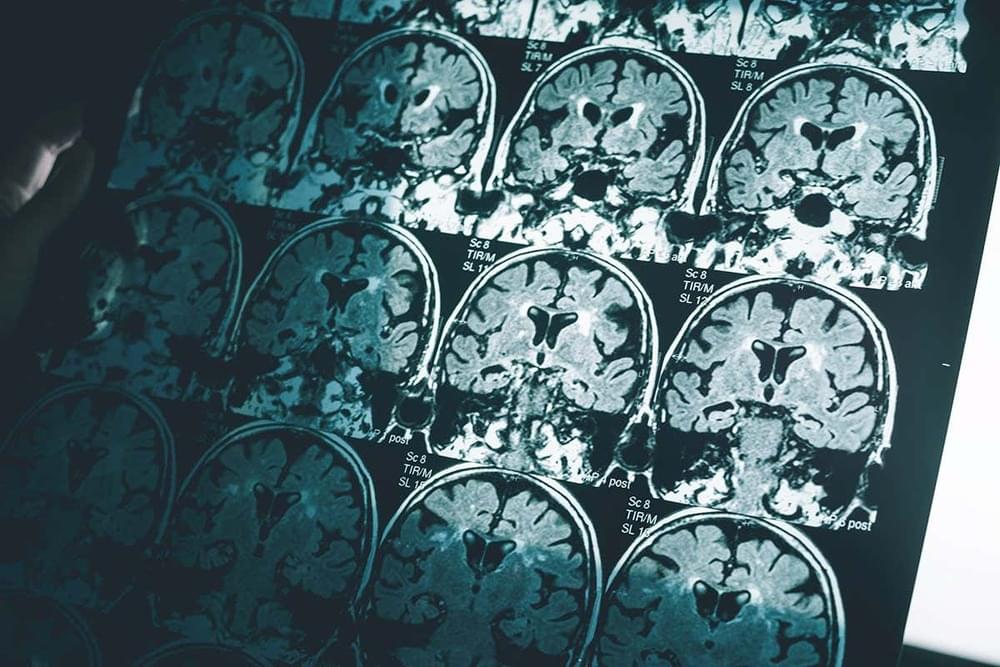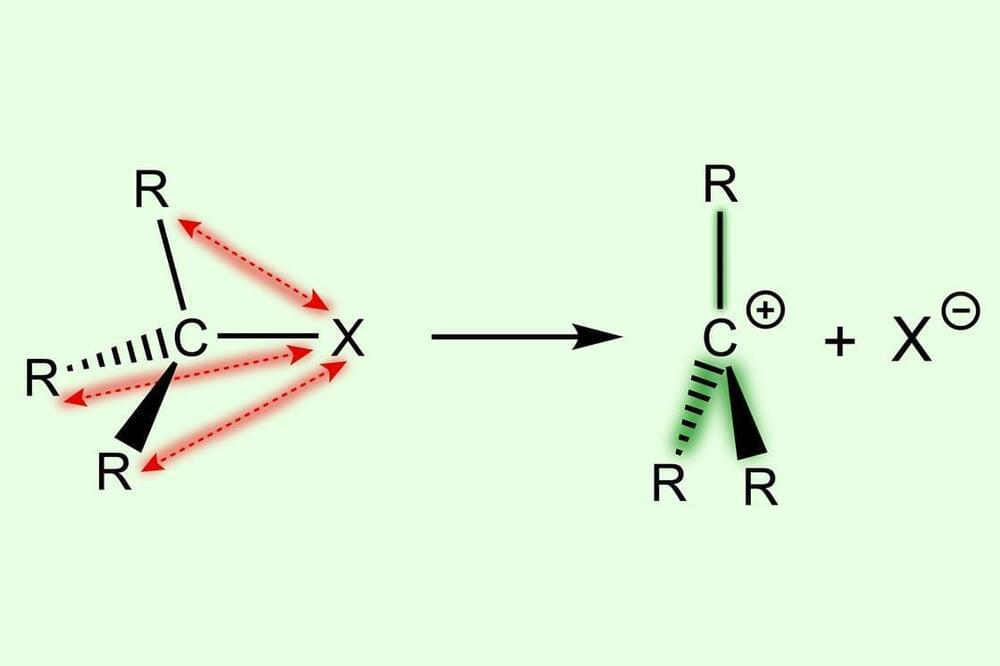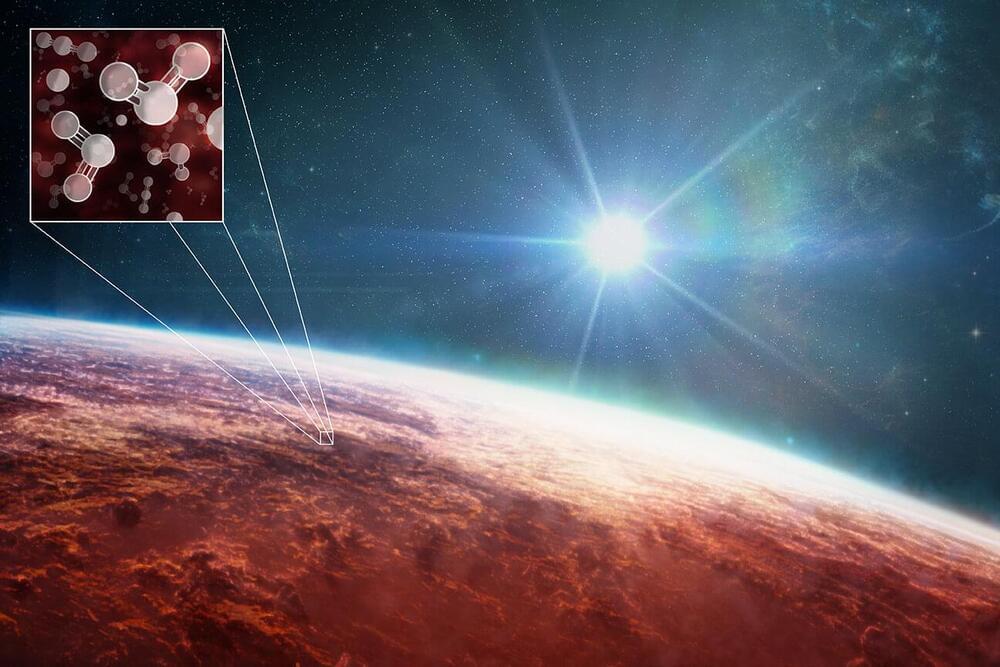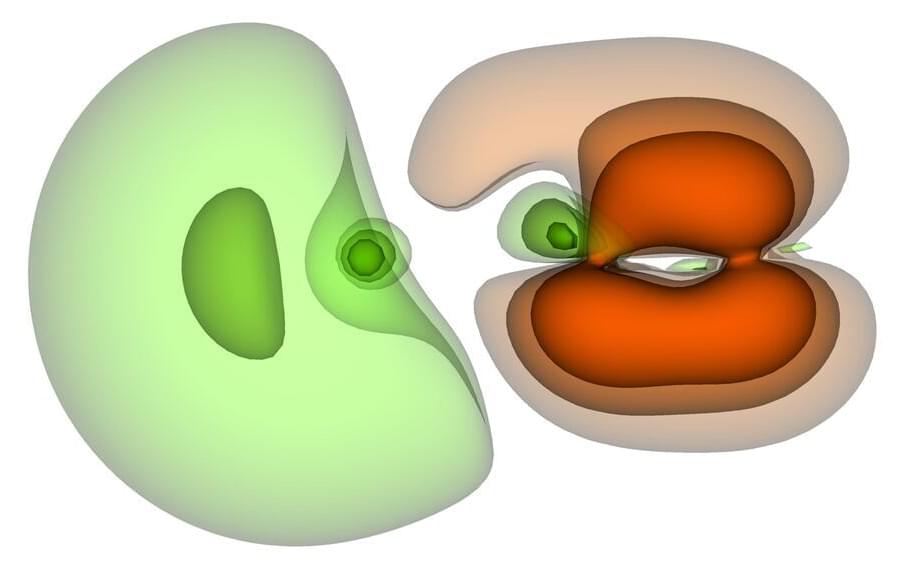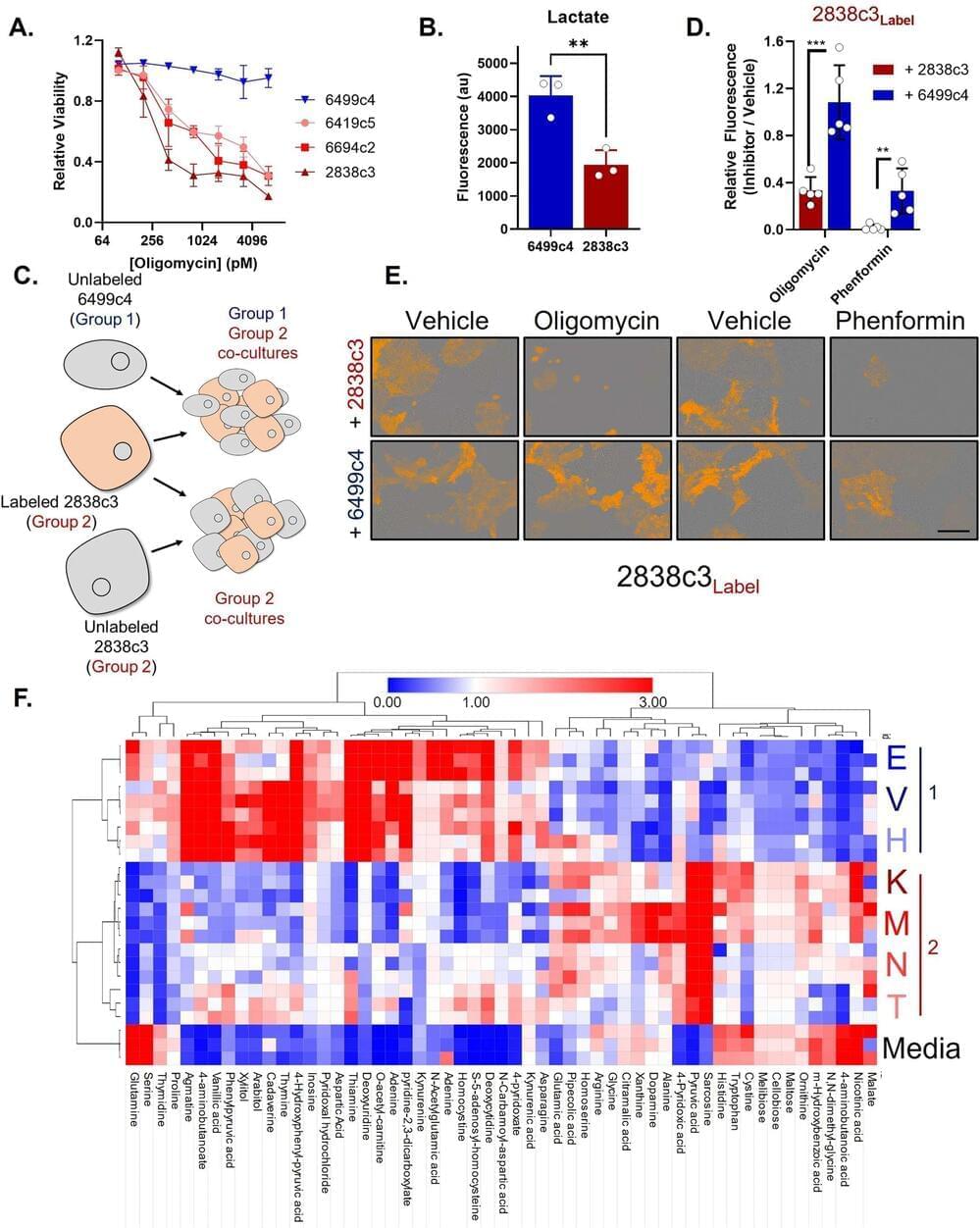A chemical called kynurenic acid may play a role in diseases characterised by cognitive impairments or psychosis, including schizophrenia, Alzheimer’s disease and bipolar disorder. Newly developed drugs that reduce this acid in the brain show promise in reducing symptoms of these conditions.
Category: chemistry – Page 219
The James Webb Space Telescope has captured a detailed molecular and chemical portrait of a faraway planet’s skies, scoring another first for the exoplanet science community.
WASP-39b, otherwise known as Bocaprins, can be found orbiting a star some 700 light-years away. It is an exoplanet — a planet outside our solar system — as massive as Saturn but much closer to its host star, making for an estimated temperature of 1,600 degrees Fahrenheit (871 degrees Celsius) emitting from its gases, according to NASA. This “hot Saturn” was one of the first exoplanets that the Webb telescope examined when it first began its regular science operations.
The new readings provide a full breakdown of Bocaprins’ atmosphere, including atoms, molecules, cloud formations (which appear to be broken up, rather than a single, uniform blanket as scientists previously expected) and even signs of photochemistry caused by its host star.
The finding could have implications on drug development beyond neuroscience.
A new study conducted by researchers at the University of Copenhagen has found that V-ATPase, an enzyme thought to be a key component of brain function, switches off randomly, even for hours at a time. This discovery has the potential to change our understanding of how our brain functions, according to a press release.
V-ATPase is an enzyme that can break down ATP molecules, the cell’s energy currency, as they pump protons across cellular membranes.
Evgenil Kovalev/iStock.
Simply put, the enzyme is responsible for providing energy to fill up the membrane bladders between neighboring neurons with chemicals that are needed to transfer a message between them. Therefore, the enzyme is quite crucial for neuronal communication, or that’s what researchers have thought so far.
It is easier to form more substituted carbocations because of destabilisation in the parent substrate, rather than stabilisation in the reactive intermediate, new research shows.1
Many organic transformations involve carbocations as reactive intermediates. These are usually formed via a heterolytic C–X bond dissociation to give a carbocation C+ and an anion X-. Current understanding is that the bond dissociation energy decreases with increased methyl substitution because of the stabilising effect of the methyl groups, as well as relief due to steric repulsion: going from substrate to carbocation gives the substituents proportionally more room in a more substituted system. However, a team in the Netherlands, led by Matthias Bickelhaupt at VU Amsterdam, has investigated this from a different angle.
The James Webb Space Telescope (JWST) has just scored another first: a detailed molecular and chemical portrait of a distant world’s skies.
The telescope’s array of highly sensitive instruments was trained on the atmosphere of a “hot Saturn”—a planet about as massive as Saturn orbiting a star some 700 light-years away—known as WASP-39 b. While JWST and other space telescopes, including Hubble and Spitzer, have previously revealed isolated ingredients of this broiling planet’s atmosphere, the new readings provide a full menu of atoms, molecules, and even signs of active chemistry and clouds.
“The clarity of the signals from a number of different molecules in the data is remarkable,” says Mercedes López-Morales, an astronomer at the Center for Astrophysics | Harvard & Smithsonian and one of the scientists who contributed to the new results.
“We are going to be able to see the big picture of exoplanet atmospheres.”
NASA’s James Webb Space Telescope has provided a detailed molecular and chemical profile of a distant exoplanet’s skies in a world first, a blog post from the space agency reveals.
However, the new observations from James Webb reveal the makeup of the exoplanet’s atmosphere like never before and reveal further details of active chemistry and clouds.
NASA, ESA, CSA, Joseph Olmsted (STScI)
The planet — an exoplanet as it is located outside of our solar system — is called WASP-39 b, and it has been observed before by many telescopes, including NASA’s Hubble and Spitzer.
Researchers have investigated the capability of known quantum computing algorithms for fault-tolerant quantum computing to simulate the laser-driven electron dynamics of excitation and ionization processes in small molecules. Their research is published in the Journal of Chemical Theory and Computation.
“These quantum computer algorithms were originally developed in a completely different context. We used them here for the first time to calculate electron densities of molecules, in particular their dynamic evolution after excitation by a light pulse,” says Annika Bande, who heads a group on theoretical chemistry at Helmholtz Association of German Research Centers (HZB). Bande and Fabian Langkabel, who is doing his doctorate with her, show in the study how well this works.
“We developed an algorithm for a fictitious, completely error-free quantum computer and ran it on a classical server simulating a quantum computer of ten qubits,” says Langkabel. The scientists limited their study to smaller molecules in order to be able to perform the calculations without a real quantum computer and to compare them with conventional calculations.
Sponsored by Kishore Tipirneni’s new book “A New Eden” available here: https://getbook.at/NewEden | Abiogenesis – origin of life. Living matter from non-living matter. The origin of living organisms from inorganic or non-living material is called abiogenesis. But abiogenesis is not evolution.
Despite the incredible variations of life we see today, at the fundamental level, all living things contain three elements: Nucleic acids, Proteins, and lipids. These three things had to have been present in order for life to start.
The most important component may have been lipids which make up the cell walls because without a way to encapsulate certain elements, they various chemicals could not come together to potentially interact.
Lipids molecules have a unique structure. The round part loves water. The tail part hates water. So it has a tendency to self-assemble into natural spheres. However, when there are certain salt ions present, it destroys the lipid spheres. But RNA and other functions of a cell require salts and other ions. However, researchers at the University of Washington showed that lipid spheres do not disassemble if they are in the presence of amino acids, precursor to protein molecules. So it turns out that lipid cell walls and proteins need each other to exist, in salty water.
Today, genetic information is stored in DNA. RNA is created from DNA. The simplicity of RNA compared to its cousin DNA, is the reason that most scientists think DNA came from RNA. This is part of the RNA world” HYPOTHESIS, which theorizes that RNA was the essential precursor which led to the first living matter. But how did the first RNA molecule form from non-living chemicals? This is not clear cut, so here are some theories. RNA is made of three chemical components: the sugar ribose, the bases and phosphate. Figuring out how the bond between the bases and ribose first formed has been a difficult to replicate in the lab because cells in our body require complex enzymes to bring RNA building blocks together before they combine to form polymers. In a 2009 study, researchers at Rensselaer Polytechnic Institute showed that RNA could have formed on the surface of clays which act like catalysts to bring RNA bases together.
But how did proteins form? In the 1950s, several experiments by Stanley Miller and Harold Urey verified that the natural formation of amino acids, components of proteins, was possible under the atmospheric conditions of Primordial Earth. It turns out that it’s pretty easy to form many kinds of organic molecules, in a wide range of environments.
Tumor cells in the most common pancreatic cancer share nutrients to live and grow. A new discovery by University of California, Irvine biologists and collaborators during a four-year investigation could help lead to better treatments for pancreatic ductal adenocarcinoma, which accounts for over 90 percent of pancreatic cancer cases. The scientists’ paper appears in Nature Cancer. While pancreatic cancer is relatively rare, it is among the leading causes of cancer death in the United States.
One obstacle in treating pancreatic ductal adenocarcinoma, known as PDA, is that it generally does not show early symptoms. Another hurdle is the complexity of its dense and fibrous tumors. Consequently, they do not have fully functioning blood vessels in the tumor. On one front, this makes it difficult to deliver effective chemotherapy. However, it also means the tumors have developed a different kind of metabolism.
“Without blood vessels, PDA cells aren’t getting the normal nutrients they need, so they have come up with other ways to nourish themselves and grow,” said Christopher Halbrook, assistant professor of molecular biology & biochemistry, and lead and co-corresponding author. Understanding this process is essential for devising treatments targeting the cancer’s metabolism.
9 nov 2022.
The challenge of fabricating nanowires directly on silicon substrates for the creation of the next generation of electronics has finally been solved by researchers from Tokyo Tech. Next-generation spintronics will lead to better memory storage mechanisms in computers, making them faster and more efficient.
As our world modernizes faster than ever before, there is an ever-growing need for better and faster electronics and computers. Spintronics is a new system which uses the spin of an electron, in addition to the charge state, to encode data, making the entire system faster and more efficient. Ferromagnetic nanowires with high coercivity (resistance to changes in magnetization) are required to realize the potential of spintronics. Especially L 10-ordered (a type of crystal structure) cobalt-platinum (CoPt) nanowires.
Conventional fabrication processes for L 10-ordered nanowires involve heat treatment to improve the physical and chemical properties of the material, a process called annealing on the crystal substrate; the transfer of a pattern onto the substrate through lithography; and finally the chemical removal of layers through a process called etching. Eliminating the etching process by directly fabricating nanowires onto the silicon substrate would lead to a marked improvement in the fabrication of spintronic devices. However, when directly fabricated nanowires are subjected to annealing, they tend to transform into droplets as a result of the internal stresses in the wire.
